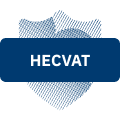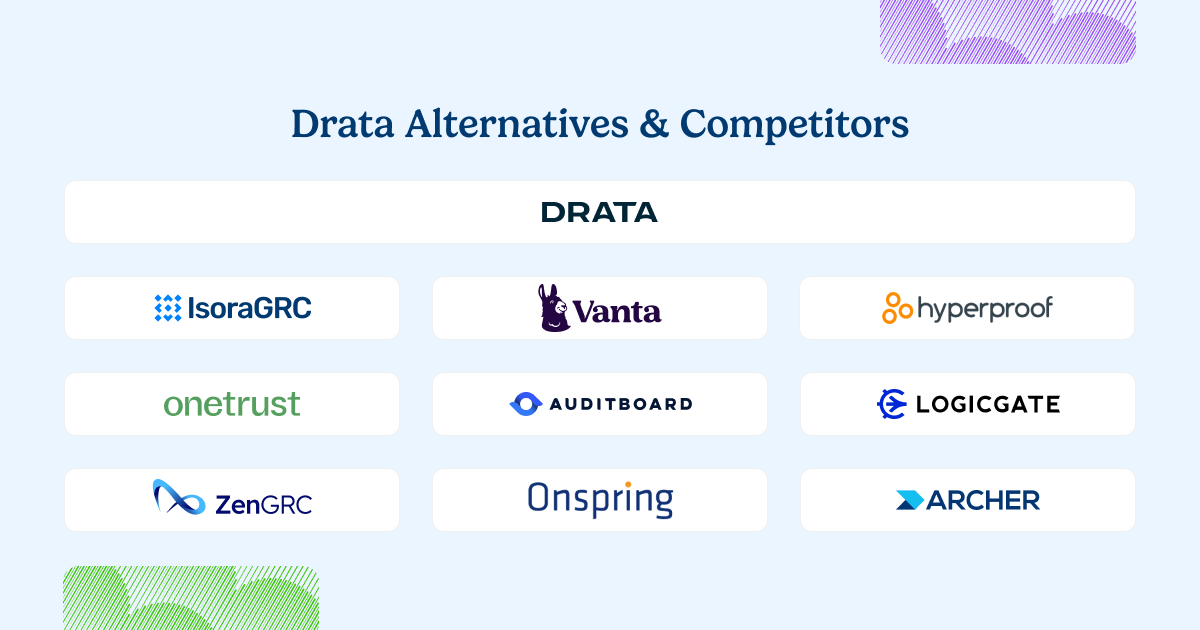
Drata is a popular choice for fast-growing companies looking to streamline SOC 2, ISO 27001, and other audit readiness efforts. Its agent-based automation makes evidence collection easy—but it’s designed for passing audits, not managing day-to-day risk.
For security teams that need to assess internal teams and vendors, manage exceptions, or maintain an organization-wide risk register, Drata can quickly feel limited. It’s great at checking boxes—but less helpful for building a sustainable, risk-informed program.
Drata is part of a growing class of security compliance automation platforms—tools designed to accelerate certification, but not necessarily to support broader IT risk management.
Why Teams Look for Drata Alternatives
| Common Limitation | Why It’s a Problem | What to Look for Instead |
| Built for audits, not ongoing risk management | Lacks features for tracking risks, exceptions, or inventories | Purpose-built workflows for IT and third-party risk |
| Closed ecosystem and agent dependency | Doesn’t adapt well to decentralized or hybrid environments | Flexible platform that supports varied assessment models |
| Minimal cross-functional adoption | Limited value beyond compliance teams | Designed for collaboration across the organization |
| Focuses on evidence collection, not engagement | Misses the people and process side of risk | Tools for participation, visibility, and remediation |
What to Look for in a Drata Alternative
- Support for risk assessments, not just evidence collection
- Inventory and exception management to track risk across teams and vendors
- A platform that fosters collaboration beyond audits
- Tools to help teams operationalize security risk, not just pass certifications
- Flexibility to support hybrid environments and evolving frameworks
Top Drata Alternatives
1. Isora GRC
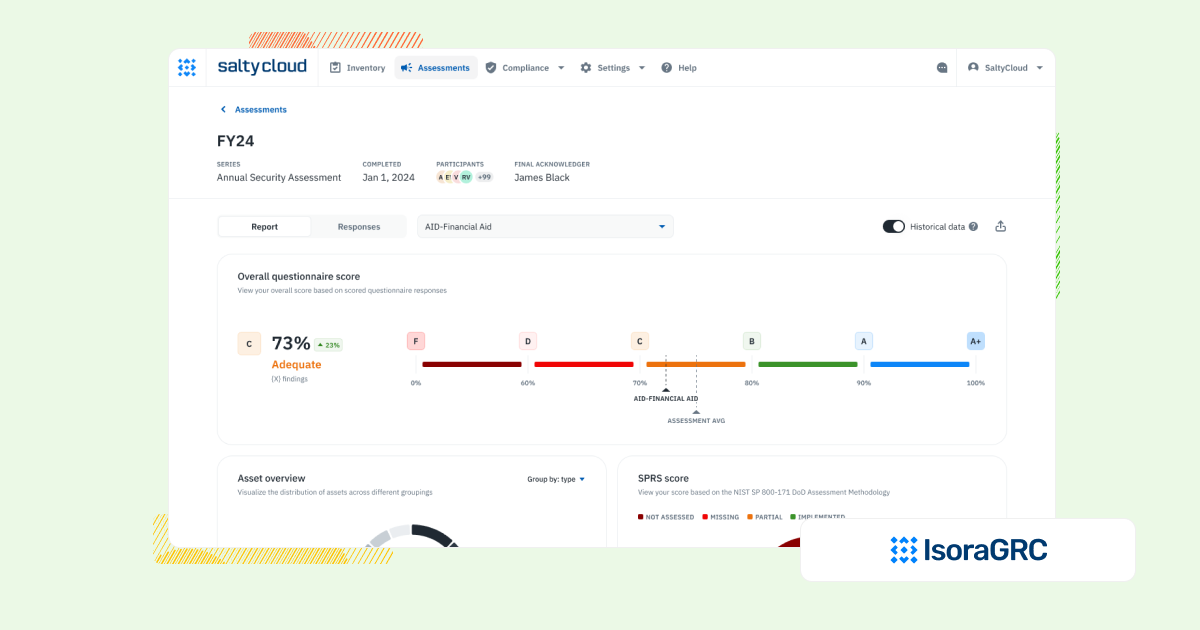
| Category | Details |
| Best For | Security teams that need to operationalize IT and third-party risk management across assets, third-party vendors, and business units. |
| Overview | Isora GRC is the GRC Assessment Platform™ built specifically for information security teams. It supports the full risk workflow, from assessments and questionnaires to risks, inventory, and reporting, without the complexity of legacy GRC tools or the limitations of audit-first platforms. |
| Strengths | Built for workflows, not checklists
✅ Supports assessments, inventory tracking, risk registers, and exceptions in a unified experience. Designed for org-wide adoption ✅ WCAG-compliant UX that requires no training and makes risk everyone’s job. Fast time-to-value ✅ Live in days or weeks, with no-code setup and minimal lift from IT. Flexible by default ✅ Customizable assessments, scalable categories, and framework mapping without heavy configuration. Scales across teams and vendors ✅ Works equally well for internal teams and third-party risk management programs. |
| Limitations | ⚠️ Not designed for legal, audit, or finance teams seeking one platform for enterprise-wide GRC
⚠️ May be too structured for teams looking to build one-off surveys or lightweight audits without repeatable workflows |
| When to Consider | If you need a modern risk platform built for continuous use, with workflows your security team will actually adopt, without the audit-only limitations of compliance automation platforms. |
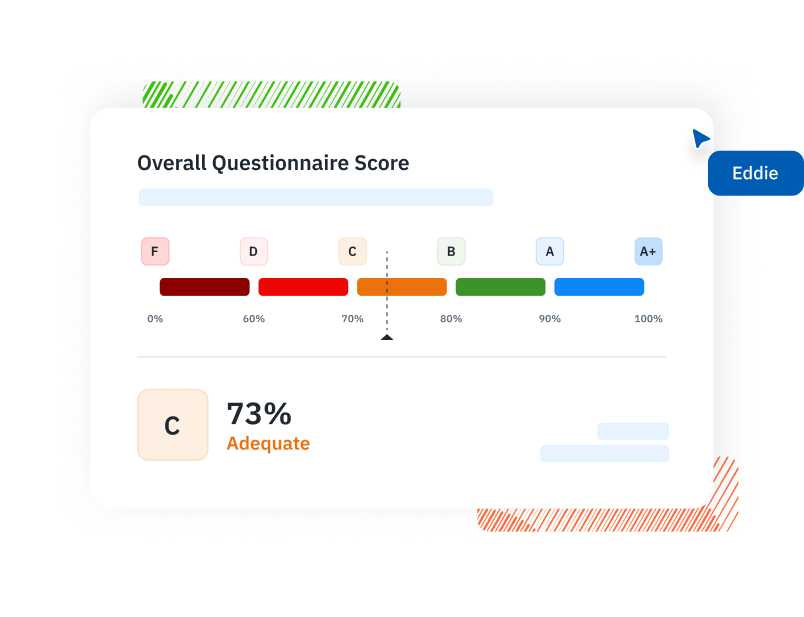
2. Vanta
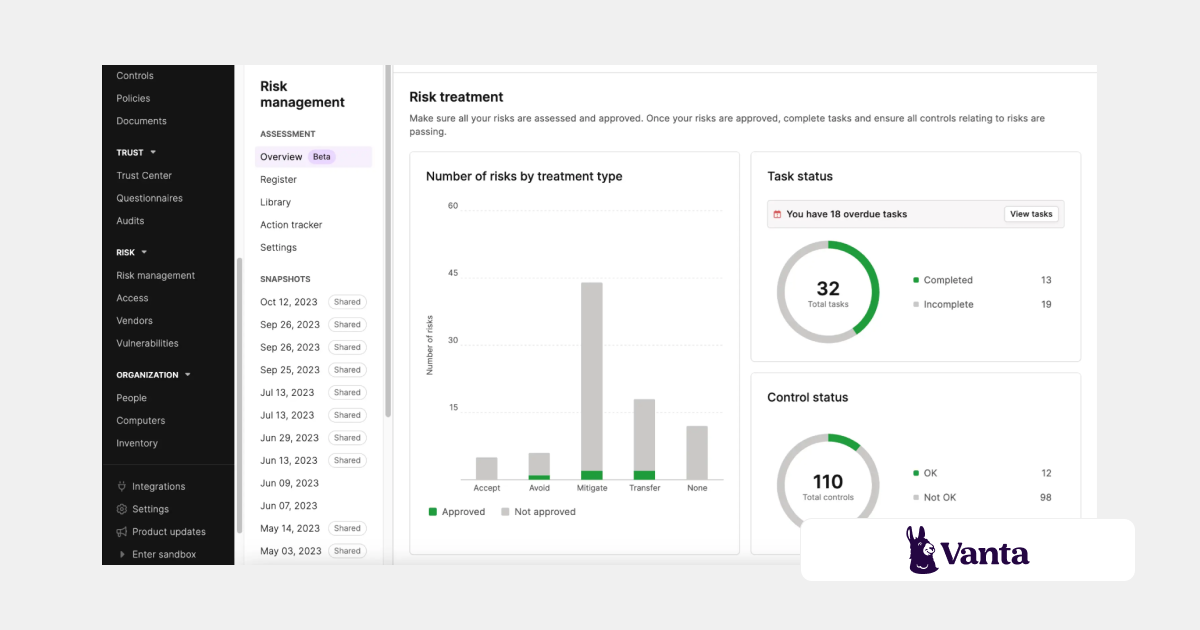
| Category | Details |
| Best For | Startups and small teams looking to quickly achieve SOC 2, ISO 27001, HIPAA, or other security certifications. |
| Overview | Vanta is a leading compliance automation tool that helps companies get audit-ready fast. Like Drata, it focuses on evidence collection and control monitoring but it doesn’t support broader IT risk management, asset tracking, or third-party assessments. |
| Strengths | ✅ Quick path to audit readiness with built-in integrations
✅ Pre-mapped controls for popular compliance frameworks |
| Limitations | ⚠️ Limited features for IT risk assessments, exception tracking, or inventory management
⚠️ Primarily built for passing audits, not managing risk over time |
| When to Consider | If your immediate goal is to pass a certification but can work around the lack of flexible workflows and broader risk functionality needed for a sustainable security program. |
| Other Comparisons | OneTrust vs Vanta vs Isora GRC |
3. Hyperproof
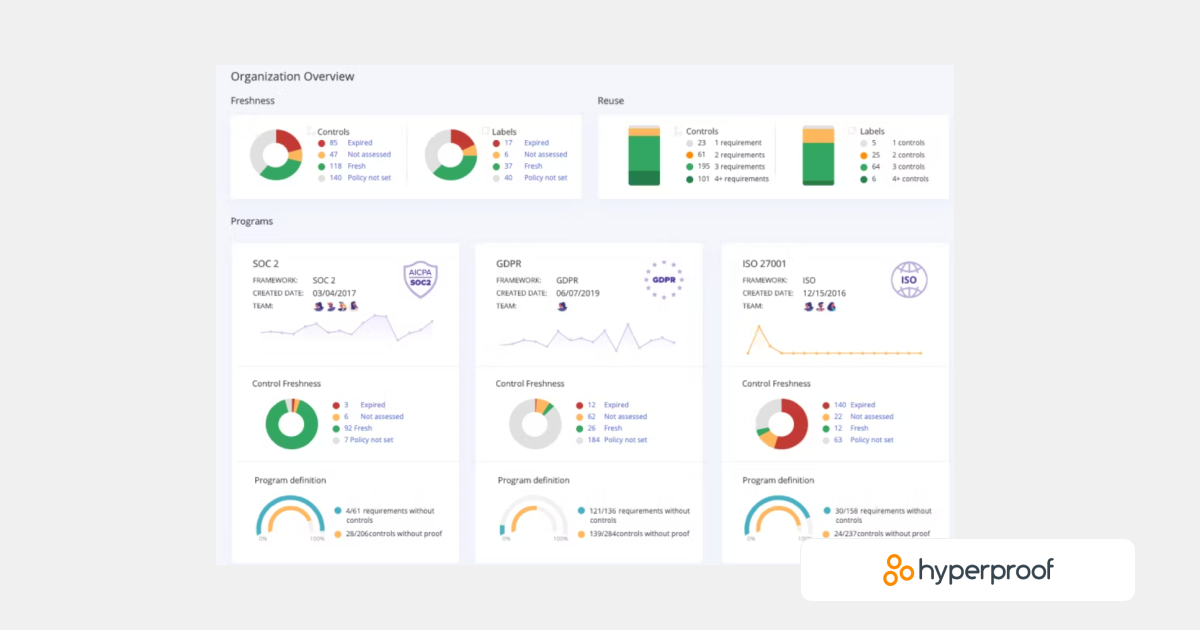
| Category | Details |
| Best For | Teams looking to simplify compliance workflows across multiple frameworks while tracking evidence and progress. |
| Overview | Hyperproof helps organizations manage controls and stay compliant with multiple frameworks. It offers visibility into audit tasks but lacks support for continuous IT risk assessments, vendor oversight, or structured exception management across departments. |
| Strengths | ✅ Helps manage multiple frameworks and control responsibilities
✅ Includes reporting tools for audit readiness and status tracking |
| Limitations | ⚠️ Not built for hands-on security assessments, risk registers, or vendor risk workflows
⚠️ Limited in terms of asset inventories, remediation workflows, and stakeholder engagement |
| When to Consider | If your focus is on managing controls across frameworks but you can work around limited support for day-to-day risk ownership and broader team collaboration outside of compliance managers. |
| Other Comparisons | Hyperproof vs Drata vs Isora GRC |
4. OneTrust GRC
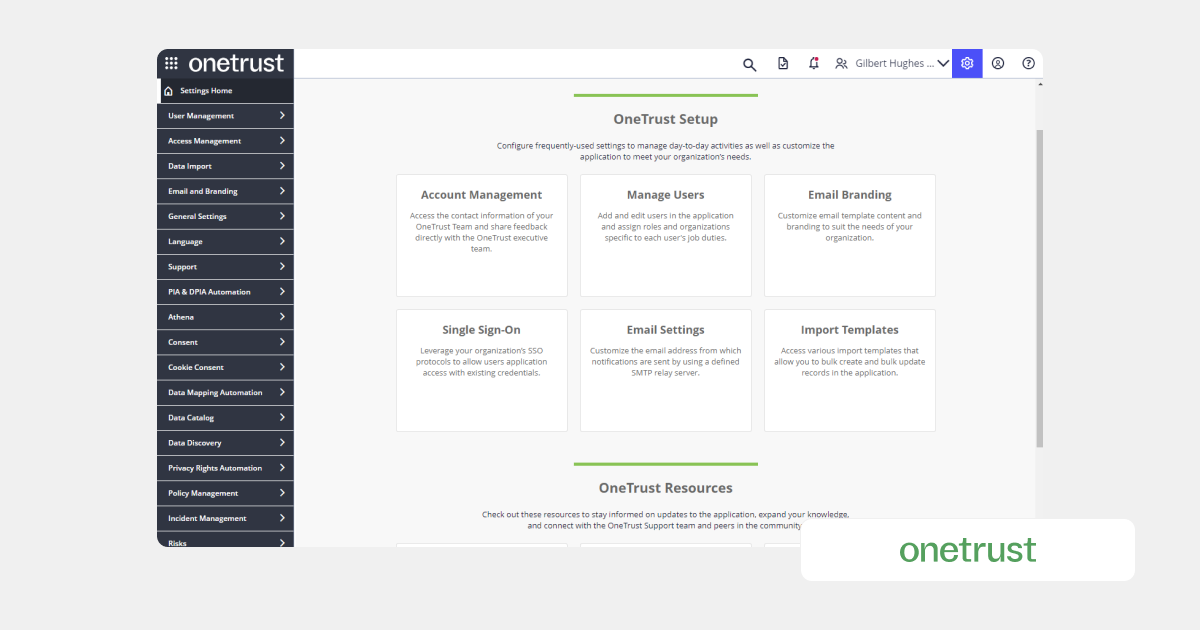
| Category | Details |
| Best For | Teams focused on vendor compliance, privacy regulations, and third-party documentation. |
| Overview | OneTrust GRC offers a wide suite of tools for privacy, governance, and vendor risk. While it includes assessment templates, it’s more focused on documentation and oversight than on supporting real-time, structured risk workflows across assets, systems, or stakeholders. |
| Strengths | ✅ Comprehensive support for privacy compliance and vendor documentation
✅ Assessment libraries like SIG, CAIQ, and HECVAT |
| Limitations | ⚠️ Doesn’t support continuous risk tracking, IT asset inventories, or exception workflows
⚠️ Designed more for legal/compliance teams than hands-on security programs |
| When to Consider | If your team is focused on compliance documentation and vendor attestations but can work around the platform’s limited depth for operational risk workflows and real-time team engagement across your org. |
| Other Comparisons | OneTrust vs ServiceNow GRC vs Isora GRC |
5. AuditBoard
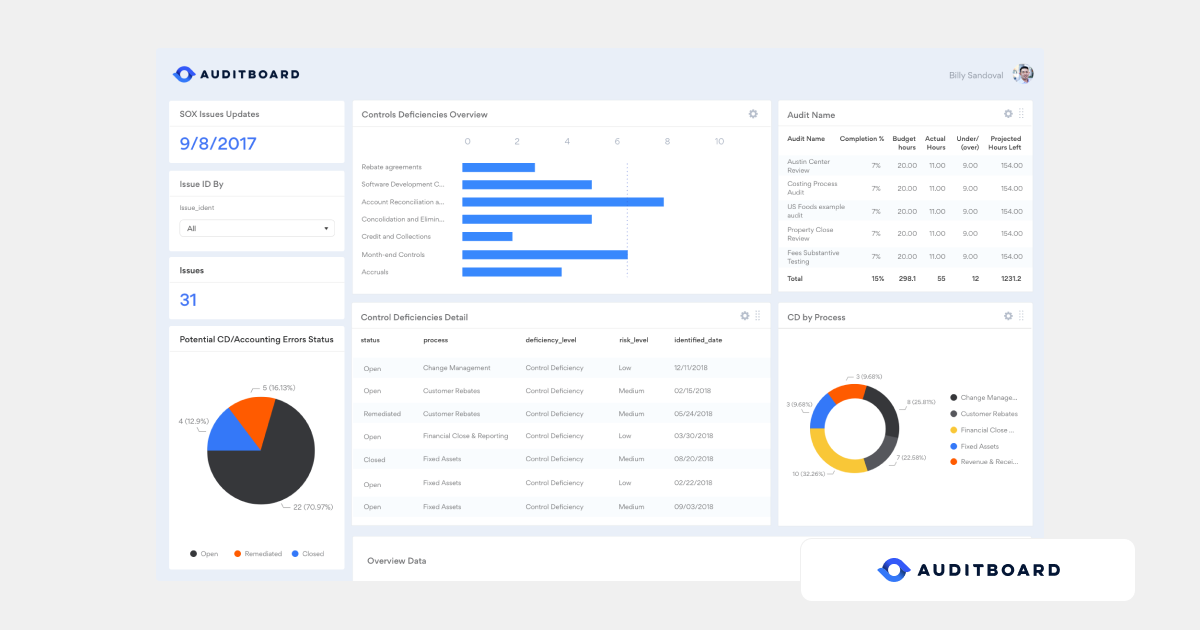
| Category | Details |
| Best For | Internal audit teams managing control testing, evidence, and regulatory compliance documentation. |
| Overview | AuditBoard is audit-first by design, offering strong control tracking and evidence management. However, it lacks tools for structured IT risk assessments, asset inventories, or security-driven exception tracking, making it a tough fit for teams managing active risk across systems or vendors. |
| Strengths | ✅ Great for documenting internal controls and organizing audit evidence
✅ Smooth experience for audit and compliance professionals |
| Limitations | ⚠️ Not built for managing ongoing IT or third-party risk workflows
⚠️ Lacks support for asset-level risk tracking, questionnaires, or dynamic team participation |
| When to Consider | If your needs are audit-heavy and control-focused but can work around the platform’s limited functionality for hands-on security assessments or vendor risk ownership outside the audit team. |
| Other Comparisons | AuditBoard vs ServiceNow GRC vs Isora GRC |
6. LogicGate
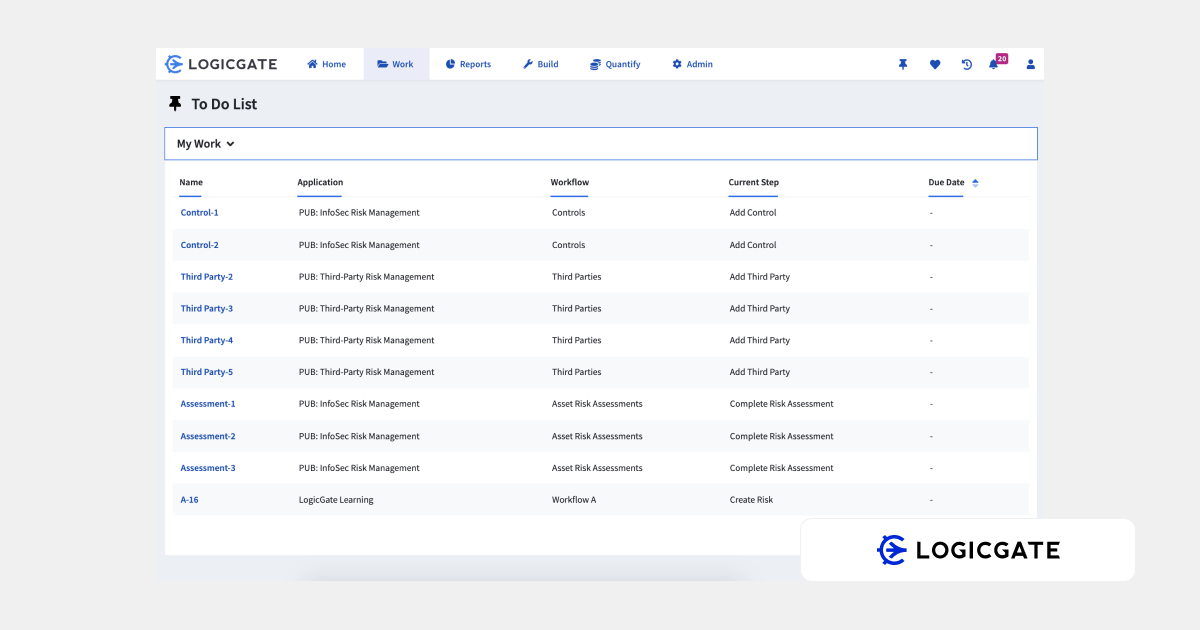
| Category | Details |
| Best For | Teams that want to build flexible, custom GRC workflows and have time to invest in setup and maintenance. |
| Overview | LogicGate is a no-code platform for designing your own risk and compliance workflows. While far more flexible than Drata, it’s not plug-and-play—security teams must build out their own assessments, registers, and processes from scratch. |
| Strengths | ✅ Customizable workflows for a wide range of GRC use cases
✅ Can be adapted to security, vendor, or IT risk programs |
| Limitations | ⚠️ Requires significant setup and process ownership to be effective
⚠️ Not ideal for teams that need ready-to-use IT risk workflows |
| When to Consider | If you want full control over how your risk program runs but can work around the time and resources needed to build and maintain your own security workflows and vendor tracking tools. |
| Other Comparisons | LogicGate vs Archer IRM vs Isora GRC |
7. ZenGRC
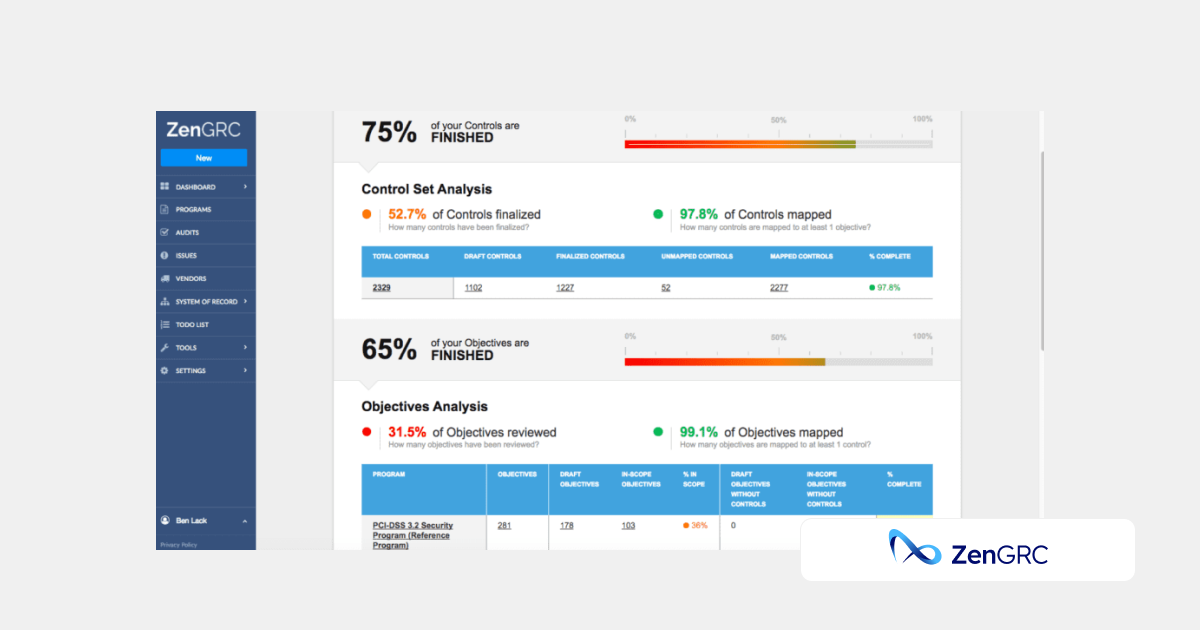
| Category | Details |
| Best For | Small teams or startups looking for an easy way to track audits and manage basic compliance evidence. |
| Overview | ZenGRC is a lightweight platform focused on helping teams get organized for audits and compliance. It’s easier to use than Drata in some cases, but lacks structure for repeatable security assessments, risk tracking, and vendor management. |
| Strengths | ✅ Simple setup and user-friendly for audit and compliance tracking
✅ Includes templates for common frameworks like SOC 2 and ISO |
| Limitations | ⚠️ Not built for structured IT risk management or third-party workflows
⚠️ Limited tools for exception tracking, asset inventories, or ongoing risk visibility |
| When to Consider | If you’re looking for a lightweight compliance tool but can work around the platform’s limited capabilities for scaling risk management and engaging security teams across the org. |
| Other Comparisons | ZenGRC vs AuditBoard vs Isora GRC |
8. Onspring
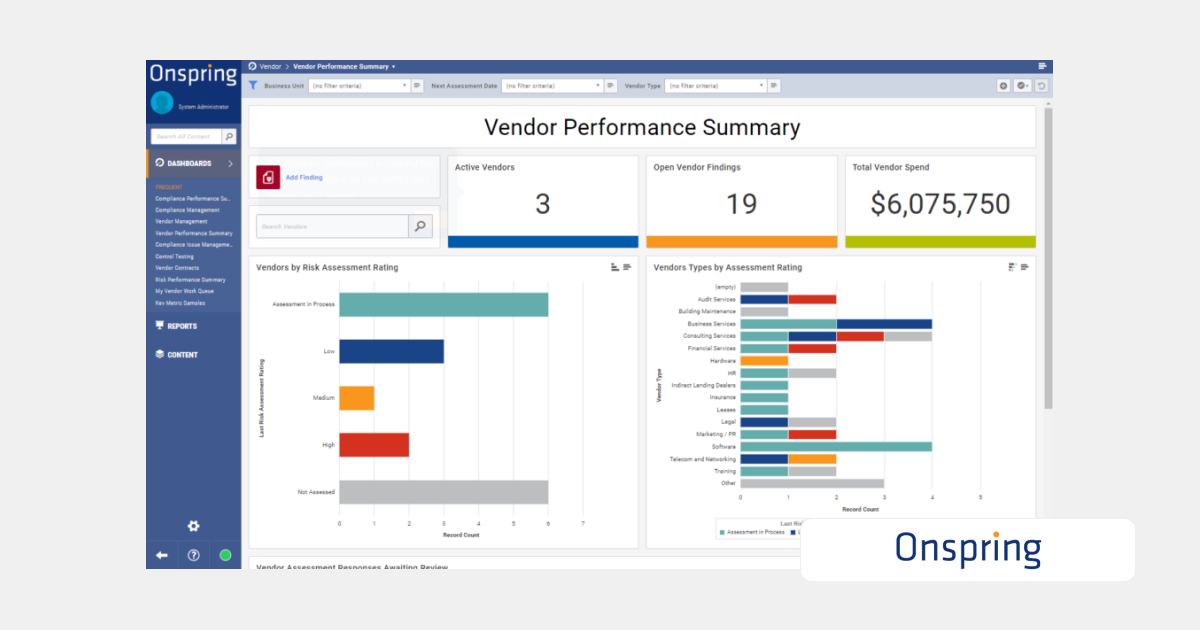
| Category | Details |
| Best For | Teams that want to create their own governance and compliance processes with a flexible, no-code platform. |
| Overview | Onspring is a no-code platform that lets organizations build GRC workflows across departments. While flexible, it’s more suited to audit and legal teams than to security teams needing structured, out-of-the-box workflows for IT risk or vendor assessments. |
| Strengths | ✅ Fully customizable workflows for audit, compliance, and governance
✅ Good fit for legal or compliance teams with unique process needs |
| Limitations | ⚠️ Requires time and design expertise to build usable security workflows
⚠️ No prebuilt tools for IT asset risk, vendor assessments, or exception tracking |
| When to Consider | If you need a customizable governance tool but can work around the lack of built-in support for day-to-day security risk management and scalable third-party workflows. |
| Other Comparisons | Onspring vs AuditBoard vs Isora GRC |
9. Archer IRM
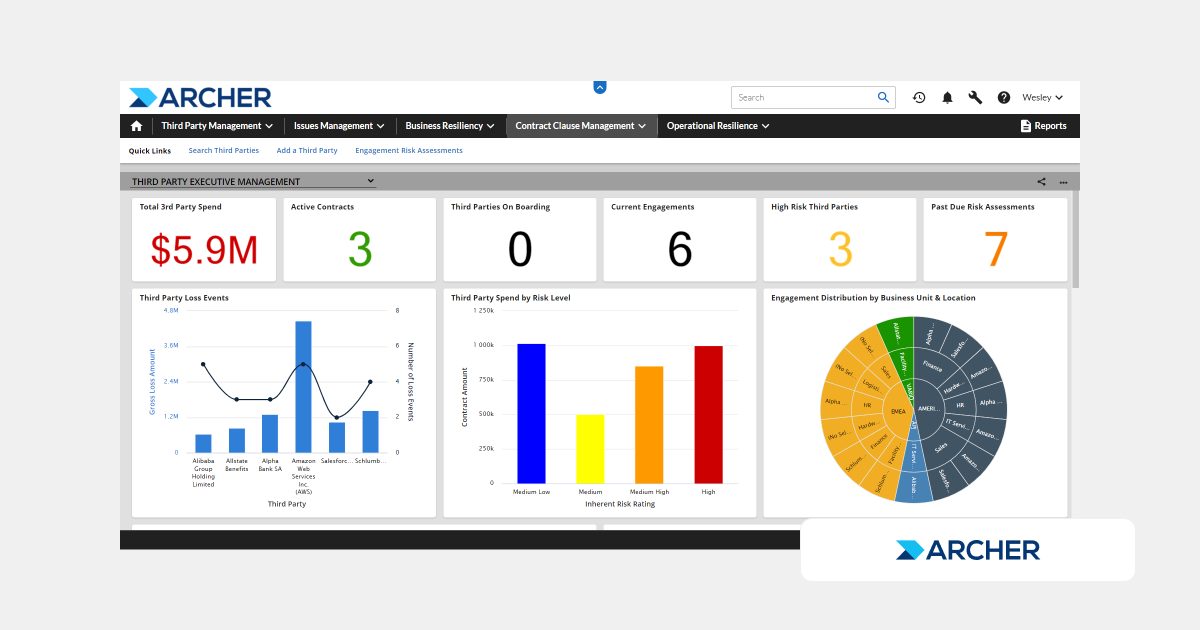
| Category | Details |
| Best For | Large organizations with mature GRC programs and the resources to support enterprise-wide governance across risk, audit, and compliance. |
| Overview | Archer IRM is a legacy enterprise GRC platform that offers deep configurability across governance functions. Like Drata, it can help with compliance but it’s too rigid and complex for security teams that need fast, flexible workflows for IT and vendor risk. |
| Strengths | ✅ Enterprise-grade governance tools with broad regulatory coverage
✅ Supports large-scale policy, audit, and compliance management |
| Limitations | ⚠️ Complex setup and high maintenance overhead
⚠️ Requires heavy configuration for everyday security team workflows |
| When to Consider | If you’re running a centralized, governance-heavy GRC program but can work around the lack of agility, usability, and structure needed for team-based security assessments and third-party risk programs. |
| Other Comparisons | Archer IRM vs ServiceNow GRC vs Isora GRC
LogicGate vs Archer IRM vs Isora GRC ZenGRC vs Archer IRM vs Isora GRC |
What Our Customers Say About Isora GRC
Security teams at top institutions are using Isora GRC to replace legacy tools and manual processes with intuitive workflows and actionable insight.
“Moving from manual processes to using Isora was a breath of fresh air. What used to take months is now automated, reliable, and defensible. Isora saves us significant time while delivering accurate insights that improve decision-making.”
Jessica Sandy, IT GRC Manager, The University of Chicago
“Isora has been essential in helping us meet our University of California cybersecurity requirements across a decentralized campus. Automating assessment data collection and reporting has given us clear visibility into unit-level risks, enabling us to prioritize resources effectively and address gaps with confidence.”
Allison Henry, CISO, The University of California, Berkeley
FAQs
What are some alternatives to Drata?
Drata is part of a category of security compliance automation platforms focused on frameworks like SOC 2 and ISO 27001. Alternatives like Isora GRC offer a broader risk management approach—helping teams manage assessments, inventories, and exceptions across internal and external stakeholders.
Why do teams switch from Drata to platforms like Isora GRC?
Teams often move on from Drata when they realize it’s built for audit readiness—not ongoing risk operations. Its agent-based automation helps with evidence collection, but it lacks workflows for managing third-party risk, tracking exceptions, or coordinating assessments across business units. Isora GRC fills those gaps with purpose-built tools for operational risk management.
Does Isora GRC replace tools like Drata or complement them?
In most cases, Isora GRC replaces Drata when a team outgrows audit checklists and needs structured workflows for managing risk. Isora goes beyond compliance automation, enabling security teams to run assessments, manage inventories, and document remediation across the organization.
Which platform is better for managing internal and vendor risk?
Drata focuses on evidence collection and framework mapping. Isora GRC is better suited for managing real-world risk, offering workflows for internal team assessments, vendor due diligence, exception tracking, and risk registers—all in a collaborative platform.
What should I look for in a Drata alternative?
You’ll want a platform that supports continuous, collaborative risk management—not just audit automation. Look for features like internal and third-party assessments, inventory tracking, and structured exception workflows. Isora GRC is designed around these capabilities from the start.
This content is for informational purposes only and does not constitute legal or compliance advice. See our full disclaimer.

